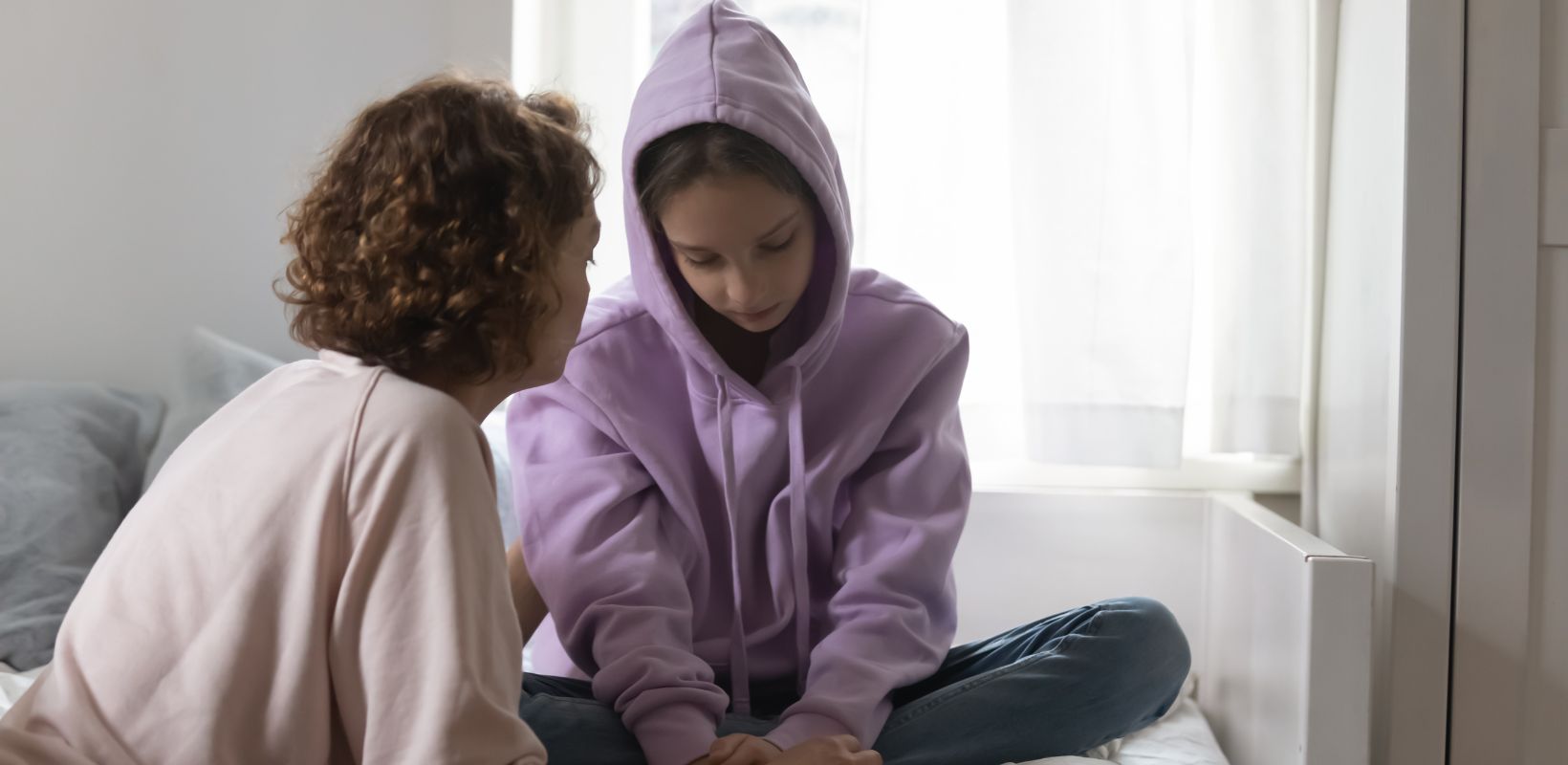Anxiety Disorders
Different individuals may experience anxiety in different ways, from excessive worrying to panic attacks. Here, we will delve into the different types of anxiety disorders, exploring their causes and symptoms. We’ll also discuss proven treatment methods to help individuals manage and conquer this condition.
What is an anxiety disorder?
An anxiety disorder is a specific type of psychiatric condition in which people respond to situations or things with fear, worry, terror, or panic. Anxiety disorder differs from normal feelings of nervousness and involves excessive fear or anxiety. Additionally, anxiety disorder can cause physical symptoms like sweating, trembling, and a rapid heartbeat. Notably, it is among the common psychological disorders affecting millions of people around the world.
While it’s normal to experience Anxiety Disorders sometimes, particularly in situations like solving a problem at work or attending an interview, anxiety disorders extend beyond temporary fear. It happens when:
- You can not control your response to the situation
- You frequently overreact when anything triggers your emotions
- Your ability to perform daily tasks is impaired by anxiety

What are symptoms of an anxiety disorder
The symptoms of an anxiety disorder can vary depending on the type of disorder and the individual. However, some common symptoms of anxiety disorders includes:
Mental Symptoms:
- Feeling nervous, restless, or tense
- Nightmares
- Recurring memories or flashbacks of traumatic events
- Having intense and uncontrollable thoughts
- Feeling panic, feared, and uneasiness
- Having the urge to avoid things that trigger anxiety
- Difficulty controlling the worry or fear
- Irritability or mood swings
Physical Symptoms:
- Muscle tension
- Shortness of breath or breathing rapidly
- Sweating and trembling
- Having an increased heart rate
- Cold or sweaty hands
- Dry mouth or nausea
- Numbness or tingling in hands or feet
- Unexplained aches and pains
Behavioral Symptoms:
- Inability to sit still or calm
- Ritualistic behaviors, such as washing hands repeatedly
- Trouble sleeping
- Feeling weak or tired
- Social withdrawal or isolation
- Difficulty concentrating
- Difficulty in Making Decisions
You are not alone;
help is here
What are the causes of anxiety disorders?
The exact cause of anxiety disorders is not fully understood however, researchers believe the following aspects may be involved:
Genetics: It’s common for anxiety disorders to be present in families because of genetic factors. They could have come from one or both of your parents.
Stress due to a medical condition: If someone have a health problem or a serious illness, they might feel anxious about what’s going to happen in the future and how they will be treated.
Drugs or alcohol: Anxiety can be caused or made worse by the usage of drugs or alcohol.
Trauma: Children who have experienced abuse or trauma or have witnessed horrific events are at a higher risk of developing anxiety disorders. Such disorders may also affect adults who have undergone traumatic experiences.
Chemical imbalance: Prolonged or severe stress can change the balance that directs your mood. Imbalances in neurotransmitters, for instance, serotonin and dopamine, may contribute to anxiety disorders.
Personality traits: Some personality traits, such as high levels of neuroticism, may increase the risk of developing an anxiety disorder.
Types of anxiety disorders
- Generalized Anxiety Disorder
- Panic Disorder
- Social Anxiety Disorder
- Specific Phobia
- Separation Anxiety Disorder
Generalized Anxiety Disorder (GAD)
Generalized anxiety disorder is a type of anxiety disorder characterized by constant and excessive worry and anxiety that interferes with daily activities such as work or relationships. In other words, with generalized anxiety disorder, you may feel extremely worried and tense — even if there’s nothing to trigger those feelings and it is difficult for you to control. It is not the same as occasionally feeling anxious due to stressful life events. GAD symptoms may include restlessness, irritability, trouble concentrating, sleep problems, fatigue, bad mood, unexplained physical symptoms, difficulty controlling worry, and muscle tension.

Panic Disorder
Panic disorder is a type of anxiety disorder characterized by the sudden emergence of extreme fear and discomfort or a sense of being out of control or disconnected from reality. Compared to other anxiety disorders, these attacks frequently involve stronger, more intense sensations. People with panic disorder try to prevent themselves by avoiding places, situations, or behaviors connected to panic attacks.
A combination of physical and psychological discomfort characterizes panic disorder. During an attack, symptoms such as fast or irregular heartbeats, sweating, shaking or trembling, shortness of breath or suffocation, chest pain, faintness or dizziness, numbness or tingling, nausea, chills or hot flashes, stomach discomfort, and feelings of being out of control may be experienced.

Specific Phobias
A specific phobia is a type of anxiety disorder characterized by an extreme and ongoing fear of a particular thing, situation, or activity. Some of these phobias, like a fear of snakes, might make sense but this is only sometimes the case. The fear is excessive and out of proportion to any actual danger posed by the object or situation. Patients are aware of their intense fear, but they are unable to get over it. Some people may go to great lengths to avoid their phobias because they are so distressing
The following are different types of phobias:
- Claustrophobia: Fear of being in a confined space
- Aerophobia: Fear of flying
- Arachnophobia: Fear of spiders
- Driving phobia: Fear of driving a car
- Erythrophobia: Fear of blushing
- Hypochondria: Fear of becoming ill
- Zoophobia: Fear of animals
- Aquaphobia: Fear of water
- Acrophobia: Fear of heights
- Escalaphobia: Fear of escalators

These are far from the only specific phobias. Nearly anything can cause a person to develop a phobia. Additionally, the list of possible phobias varies and increases with time. Nomophobia, for instance, is the fear of going without a phone is hot off the press.
Separation Anxiety Disorder (SAD)
An individual with a separation anxiety disorder has excessive fear or anxiety about being separated from persons to whom they are attached. Separation anxiety is often thought of as something that only children deal with; however, adults can also be diagnosed with separation anxiety disorder.
A person with a separation anxiety disorder could worry about losing the person they love most all the time, hesitate to leave the house or refuse to spend the night apart from them, or even have nightmares about being separated. The anxiety or fear may cause significant distress or impairment in daily functioning.
Common symptoms of Separation Anxiety Disorder in children include crying, tantrums, complaints of physical symptoms, and reluctance to attend school or other activities.

Treatments and Therapies for anxiety disorders
In addressing anxiety disorders, it’s crucial to recognize that, similar to any other psychological disorder, it requires treatment. The first step is to see a psychiatrist to ensure that no other physical issue is causing the symptoms. A mental health professional like a psychiatrist can assist you in selecting the most effective treatment method if you are diagnosed with an anxiety disorder.
Psychotherapy
If you’re experiencing anxiety disorders, psychotherapy or “talk therapy” can be helpful for you. Psychotherapy techniques include cognitive behavioral therapy and acceptance and commitment treatment. Cognitive behavioral therapy (CBT) teaches people new ways of thinking, acting, and reacting to events or situations. It teaches you to recognize thought patterns and behaviors that lead to troublesome feelings. Acceptance and commitment treatment (ACT) employs techniques like goal-setting and mindfulness to lessen discomfort and anxiety.
Medication
While medications cannot cure anxiety disorders, they can effectively alleviate the symptoms and provide significant relief. The three main groups of medications used to treat anxiety disorders are antidepressants, anti-anxiety medications, and beta-blockers. However, to determine the best-prescribed medication and dosage, your healthcare professional will discuss it with you. Do not alter the dosage without first consulting your healthcare provider. They’ll monitor you to make sure the medicines are working without causing negative side effects.

Social Anxiety Disorder
Social Anxiety Disorder (SAD) is a type of anxiety disorder characterized by an intense, persistent fear of social situations and being watched and judged by others. A person with a social anxiety disorder experiences extreme discomfort about being embarrassed, humiliated, rejected, or looked down on in social situations.
People with SAD may fear social situations such as public speaking, meeting new people, or using public restrooms. A social anxiety disorder may cause a person to altogether avoid social situations. The fears of social situations may feel so intense that it seems beyond their control and may interfere with their ability to function in social or occupational situations.
People with social anxiety disorder may experience symptoms such as blushing, sweating, trembling, rapid heartbeat, stomachaches, rigid body posture, and difficulty making eye contact.